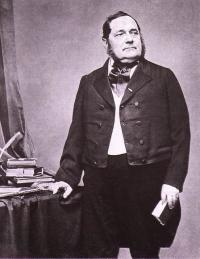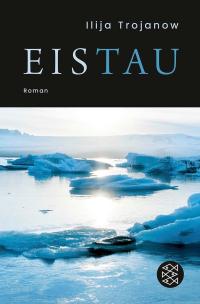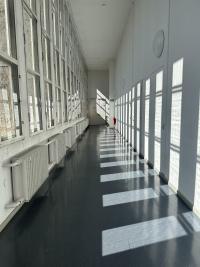Lauren Antin, German Studies

This summer I had the privilege of receiving the Umwelt Center summer research grant to begin working on my master’s thesis. With the money, I had the freedom to spend my time pouring over books and internet archives to decide what I wanted to dedicate my project to, with my goal for the summer being to complete a paper that would aid my thesis writing. Having long been interested in the German forest, I began researching the Schwarzwald and German forestry practices. Ultimately, I was pointed by my advisor to look at Adalbert Stifter, famed Austrian author of the 19th century whose centering of nature captured the ambitions and anxieties of a generation grappling with the challenges of modernity. To start my Stifter journey, I read most all his works with “wald” in the title. My interest was piqued by Stifter’s “Der Hochwald” where my advisor, May Mergenthaler, and I observed his instrumentalization of the forest to reflect on societal values in conflict with each other. This observation developed into an essay titled, “Into the Virgin Wood: Stifter’s Musings on Innocence in Der Hochwald.” My summer research has allowed me to spend my fall semester thoughtfully crafting my thesis as opposed to feeling stressed about the project. I am extremely grateful to have received this funding!
Marcel Foerster, German Studies

In this letter, I would like to describe how I used the 2025 summer funding provided by the Department of Germanic Languages and Literature’s “Umwelt Center for Germanic Studies & Environmental Humanities” at The Ohio State University to continue my professional development and research goals. Above all, the summer funding enabled me to make significant progress on my dissertation project. I spent much of the summer further refining my theoretical construct—the “Five Narrative Elements” Framework. My dissertation focuses on the simulation of nature in climate fiction literature (cli-fi) and open-world role-playing video games. With this research, I seek to develop a new literary theory of nature simulation that explains its narrative mechanics and its affective power in both cli-fi novels and video games. The dissertation consists of two main parts. The first part analyzes two primary texts:
Cornelia Franz’s Ins Nordlicht blicken (2012) and Ilija Trojanow’s EisTau (2011). The second part of my dissertation focuses on two open-world video games to examine the same phenomenon in digital narratives. Due to the summer funding, I was able to use the time in the summer to complete the analysis of the first novel (Ins Nordlicht blicken) and to begin the analysis of the second novel (EisTau). Over the course of the summer, my work mainly consisted of analyzing various text passages in both novels, reading secondary literature in the fields of ecocriticism and narrative theory, and writing my literature chapter. These steps allowed me to not only complete the analysis of the first novel but also to make significant progress examining the second novel, EisTau. Overall, I was able to write approximately 60 pages of my dissertation during the summer. This progress enabled me to finish the draft of
my text for the first main part soon after. I am now working on making revisions to the first main part. I will begin the second main part of my dissertation in November. Outside of dissertation work, the Umwelt Center summer funding enabled me to prepare for
two upcoming presentations at the German Studies Association’s annual conference in September 2025. It further allowed me to participate in a two-day “Engaged Digital German Environmental Studies (EDGES)” symposium organized by the Environmental Studies
Network in German Studies. The seminar’s goal was to exchange current trends in the field, inform others about their new research projects, and to stimulate discussions on contemporary German climate fiction novels. Another highlight of the EDGES symposium was building connections to other scholars in the field of German ecocriticism and to hear a talk by climate activist, politician, and author Luise Neubauer, one of Germany’s most prominent figures in the climate movement. Additionally, I was able to establish further connections to other scholars with an interest in narrative theory by conducting Zoom meetings with multiple
scholars throughout the summer, such as Erin James (University of Idaho) and David Haas (University of Georgia).
The summer funding, therefore, helped me to stay on track with my own research, to make significant progress on my analysis of nature simulation in climate fiction literature, to prepare for upcoming conference talks, and to learn more about other research projects in the fields of German ecocriticism and narrative theory. I am deeply grateful for this support, which was vital to my academic progress this last summer.
April Riddle, History of Art
Thanks to the Umwelt Center’s Summer Graduate Research Fellowship, I was able to spend a full month in Germany conducting research for my second dissertation chapter. From mid-July to mid-August, I traveled between Berlin, Munich, Düsseldorf, Kassel, and Karlsruhe. In Bedburg-Hau, just outside of Düsseldorf, I primarily spent time in the Joseph Beuys Archive at Museum Schloss Moyland. In this archive, I gained access to various letters, documents, and rare books related to Joseph Beuys’s 7000 Eichen project (1982). Documents, such as a letter from the project’s coordinating office detailing donations, the original announcement pamphlet for the campaign, and a contract between Beuys and Dentsu-Young & Rubicam K.K. for a television advertisement for whiskey, were particularly relevant to my ongoing research. In Kassel, the city where the 7000 Eichen project took place, I had the opportunity to spend a few days researching at documenta archiv. Similar to my time at the Joseph Beuys Archive, I was able to reference clarifying newspaper clippings, letters, and interviews related to 7000 Eichen. I was also able to consult regional magazines, such as Stadt-Zeit Kassel Magazin, which contain articles about the project. While in Kassel, I spent time walking around the city’s different neighborhoods documenting sites where trees and basalt steles were planted for the project between 1982 and 1987. I also had the chance to visit the Neue Galerie, which houses several important artworks by Beuys and also contains an exhibition about the history of documenta. Visiting Berlin allowed me to see the collection of Joseph Beuys artworks at Hamburger Bahnhof. When I visited, this museum also had an exhibition called Many Worlds Over featuring the artist Ayoung Kim, who I am considering writing about in one of my other dissertation chapters. While in Munich, I had the chance to see The End of the Twentieth Century (1984) at Pinakothek der Moderne, which is a key artwork connected to 7000 Eichen. I was also able to visit the Haus der Kunst, which had an exhibition called Kiss Kiss Kill Kill, a retrospective of the artist Shu Lea Cheang, who I am likewise considering writing about in another of my dissertation chapters. Finally, in Karlsruhe, I spent time at ZKM (Zentrum für Kunst und Medien), which holds a permanent exhibition called zkm_gameplay. This exhibition is relevant to my research because it was one of the first exhibitions about video games organized in an art museum setting. Now that I have returned to Columbus, I am working on organizing my research findings from this summer and writing my second dissertation chapter “Temporal Displacements: Playing the Financialized Environment.” I am looking forward to presenting this research in October at the Association for the Study of the Arts of the Present’s 16th annual conference in Houston. The theme of the conference is “Worldmaking/Worldbreaking,” and I will be presenting as part of a panel titled “Practices of World-Building/Breaking in Gaming and with Game Engines.”
Emma Todd, History

This past July and August (2025) I used my Umwelt Grant to conduct preliminary dissertation research in Germany and complete a C1 language course at the Goethe Institute in Frankfurt. The Umwelt Grant paid for my flight to Germany and for my lodging and living expenses while in Frankfurt and Munich. Funding for the language course at the Goethe Institute was supplemented by a Career Development Grant. The course was a helpful re-introduction to learning German and was good preparation for my research in archives. While in Frankfurt I was also able to network with museum professionals and archivists. However, I did the bulk of my preliminary research in Munich and this portion of my trip was fully funded by the Umwelt Grant.
I stayed in Munich for two and a half weeks and visited three archives and three museums. I took this preliminary research trip to prepare for grant and fellowship applications for my dissertation research. In Munich I visited the Bayerisches Wirtschaftsarchiv, the Staatsarchiv München, and the Deutsches Museum Archiv. In these archives I was able to get a better idea of what materials that are relevant to my research are available. Although I only had two and a half weeks in the archives in Munich the purpose of my trip was to get experience working in German archives and find materials that will help me come up with a tentative research plan for future grants and fellowship applications. This trip was incredibly helpful for filling out specific research intentions in my Fulbright application and for making connections at LMU for a university sponsor for my Fulbright.
I also took a trip to Wolznach, Germany a town outside of Munich to visit the Deutsches Hopfenmuseum which is dedicated to the history of hops, a crucial ingredient in beer, and the history of the region. While there I was able to meet with the staff and connect with their archivist.
